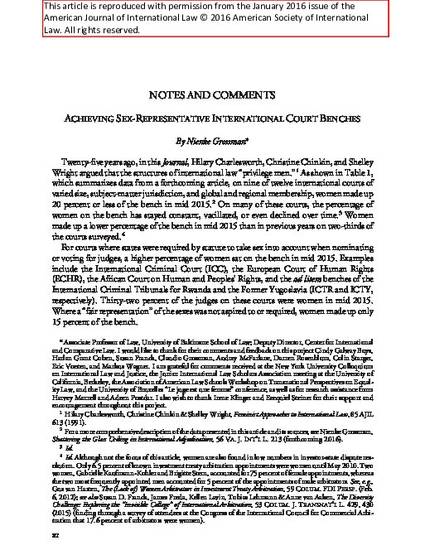
Twenty-five years ago, in this Journal, Hilary Charlesworth, Christine Chinkin, and Shelley Wright argued that the structures of international law “privilege men.”1 As shown in Table 1, which summarizes data from a forthcoming article, on nine of twelve international courts of varied size, subject-matter jurisdiction, and global and regional membership, women made up 20 percent or less of the bench in mid 2015.2 On many of these courts, the percentage of women on the bench has stayed constant, vacillated, or even declined over time.3 Women made up a lower percentage of the bench in mid 2015 than in previous years on two-thirds of the courts surveyed.4 For courts where states were required by statute to take sex into account when nominating or voting for judges, a higher percentage of women sat on the bench in mid 2015. Examples include the International Criminal Court (ICC), the European Court of Human Rights (ECHR), the African Court on Human and Peoples’ Rights, and the ad litem benches of the International Criminal Tribunals for Rwanda and the Former Yugoslavia (ICTR and ICTY, respectively). Thirty-two percent of the judges on these courts were women in mid 2015. Where a “fair representation” of the sexes was not aspired to or required, women made up only 15 percent of the bench.

This article is reproduced with permission from the January 2016 issue of the American Journal of International Law © 2016 American Society of International Law. All rights reserved